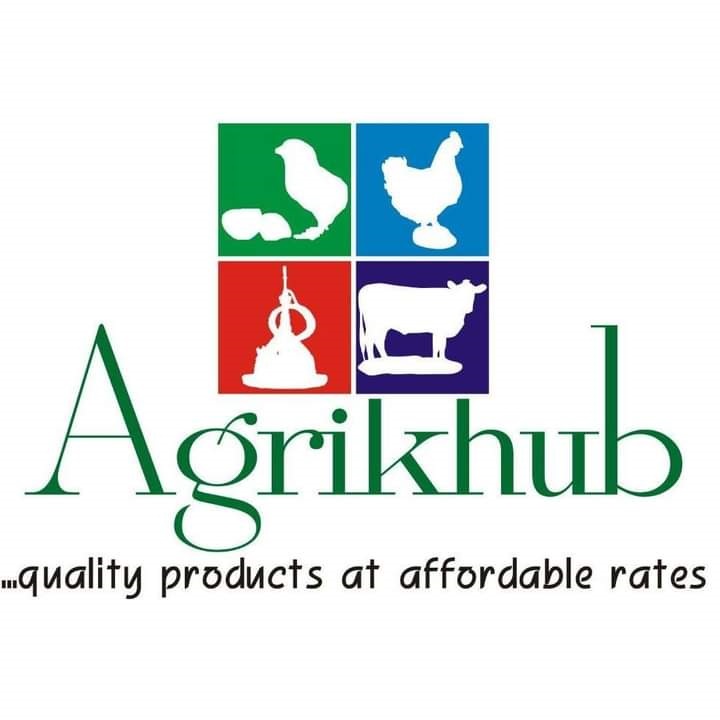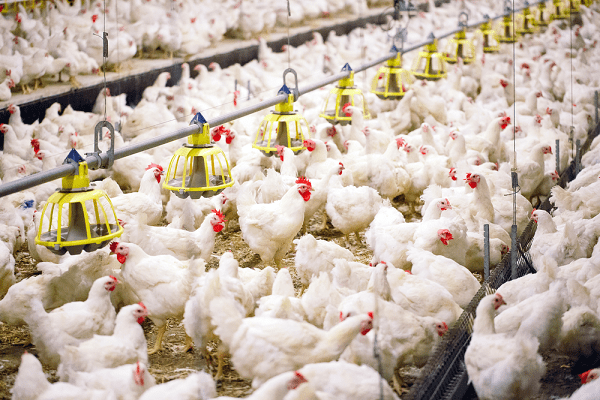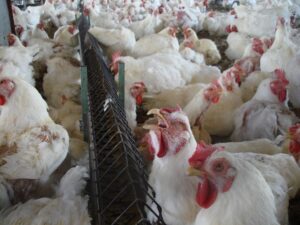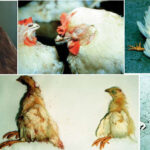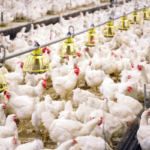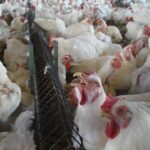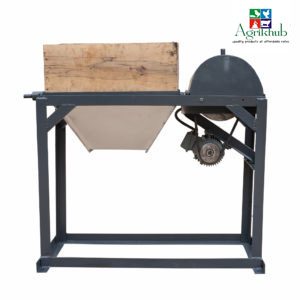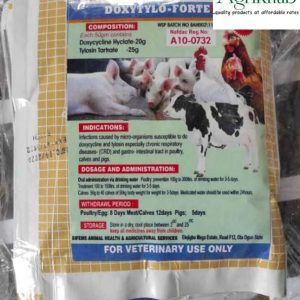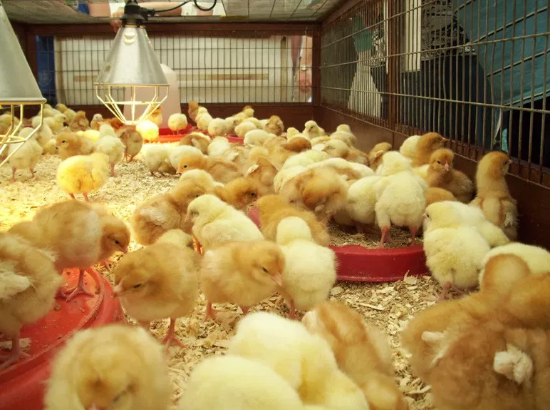
Introduction: Starting a poultry farm can be a rewarding and profitable venture for individuals interested in the agriculture industry. Whether you plan to raise chickens for meat or eggs, establishing a well-designed and efficiently managed poultry farm is crucial for success. This article aims to provide you with a step-by-step guide on how to set up your own poultry farm.
- Conduct Market Research: Before diving into the poultry farming business, it is essential to conduct thorough market research. Evaluate the demand and competition in your target area to identify potential customers and market opportunities. Additionally, consider factors such as pricing, local regulations, and consumer preferences to make informed decisions.
- Decide on the Poultry Type: Determine the type of poultry you want to raise, as it will influence various aspects of your farm’s setup. Common options include broilers (meat chickens), layers (egg-producing chickens), or a combination of both. Each type has specific requirements, so make a choice based on market demand and your available resources.
- Choose a Suitable Location: Selecting an appropriate location for your poultry farm is crucial. Look for a site with ample space, good drainage, access to clean water, and a favorable climate. Adequate ventilation and protection from harsh weather conditions are also vital considerations. Ensure the chosen location adheres to local zoning laws and environmental regulations.
- Construct the Housing: Constructing suitable housing facilities is vital to ensure the health and well-being of your poultry. Consider the following aspects: a. Space Requirements: Provide enough space to accommodate the number of birds you plan to raise, following industry-recommended guidelines. b. Proper Ventilation: Install proper ventilation systems to maintain fresh air circulation, control temperature, and reduce the risk of diseases. c. Lighting: Install appropriate lighting systems to stimulate growth and productivity, mimicking natural daylight cycles. d. Security: Implement effective security measures to protect your poultry from predators and theft.
- Arrange for Equipment and Supplies: Procure the necessary equipment and supplies for your poultry farm. This may include feeders, waterers, incubators (for hatcheries), egg trays, and brooders (for young chicks). Ensure the equipment is of good quality and suited to the specific needs of your chosen poultry type.
- Develop a Feeding and Nutrition Plan: A well-balanced and nutritious diet is crucial for the health and growth of your poultry. Consult with a poultry nutritionist or veterinarian to develop a feeding plan that meets the specific nutritional requirements of your birds at different stages of growth. Establish relationships with reliable suppliers to ensure a steady supply of high-quality feed.
- Implement Biosecurity Measures: Implementing robust biosecurity measures is essential to prevent the outbreak and spread of diseases within your poultry farm. Control access to the farm, maintain strict hygiene protocols, and establish a vaccination schedule in consultation with a veterinarian. Regularly monitor the health of your birds and promptly address any signs of illness.
- Establish a Management Plan: Develop a comprehensive management plan that outlines the day-to-day operations of your poultry farm. This includes tasks such as monitoring feed and water consumption, managing waste, cleaning and disinfection routines, and record-keeping. Hiring skilled farm workers or acquiring the necessary training yourself will contribute to efficient farm management.
- Marketing and Sales Strategy: Devise a marketing and sales strategy to effectively promote your poultry products. Identify potential buyers, such as local markets, restaurants, or wholesalers, and establish partnerships where possible. Leverage digital platforms and social media to create an online presence and reach a wider audience.
- Seek Professional Advice: Throughout the process of setting up your poultry farm, consider seeking guidance from industry professionals, agricultural extension services, or experienced poultry farmers. Their expertise can provide valuable insights and help you overcome challenges.
- Procure Healthy Chicks or Birds: Source your chicks or birds from reputable hatcheries or breeders to ensure they are healthy and disease-free. Conduct thorough inspections and inquire about the vaccination history of the birds. Healthy stock will contribute to the overall success of your poultry farm.
- Provide Adequate Water Supply: Water is essential for the health and hydration of your poultry. Ensure a reliable and clean water supply is readily available within the housing facilities. Regularly clean and sanitize waterers to prevent the growth of bacteria and algae.
- Consider Waste Management: Implement an efficient waste management system to maintain cleanliness and reduce the risk of disease transmission. This may involve proper disposal of manure, regular cleaning of the housing facilities, and composting to utilize waste as fertilizers for crops or gardens.
- Set Up Adequate Lighting: Appropriate lighting plays a crucial role in the productivity and well-being of your poultry. Install lighting systems that provide the right intensity and duration of light for the specific stage of growth. This helps regulate their biological functions and promotes optimal performance.
- Plan for Egg Collection and Storage: If you are raising laying hens, plan for efficient egg collection and storage. Provide nest boxes with soft bedding material to encourage hens to lay eggs in a clean and comfortable environment. Establish a system for regular collection, grading, and proper storage of eggs to maintain their quality.
- Establish Relationships with Suppliers and Vendors: Develop strong relationships with feed suppliers, veterinary service providers, equipment manufacturers, and other relevant vendors. Establishing reliable partnerships ensures a steady supply of necessary inputs and services, as well as access to expert advice when needed.
- Continuous Learning and Adaptation: The poultry farming industry is dynamic, and staying updated with the latest practices, technologies, and market trends is essential. Participate in workshops, seminars, and industry conferences to enhance your knowledge. Stay open to adapting your methods and strategies based on new information and evolving consumer demands.
- Financial Planning and Record-Keeping: Develop a comprehensive financial plan that includes the initial investment, operational costs, and projected revenue. Keep accurate records of all financial transactions, including expenses, income, and any grants or subsidies you may receive. Regularly review your financial performance to identify areas of improvement and make informed decisions.
- Seek Legal and Regulatory Compliance: Familiarize yourself with the local laws, regulations, and permits required for operating a poultry farm. Ensure compliance with environmental regulations, animal welfare standards, and food safety guidelines. Consult with legal experts or agricultural extension services to ensure you meet all necessary legal obligations.
- Monitor and Evaluate Performance: Regularly monitor and evaluate the performance of your poultry farm. Keep track of production metrics, such as growth rates, feed conversion ratios, mortality rates, and egg production. Analyze the data to identify patterns, diagnose issues, and implement corrective measures as needed.
Remember, setting up a poultry farm requires dedication, hard work, and continuous learning. By combining proper planning, efficient management, and a focus on quality, you can establish a successful and sustainable poultry farming business.
- Implement Biosecurity Measures: Biosecurity is crucial for preventing the introduction and spread of diseases in your poultry farm. Establish strict protocols to control access to your farm, including footbaths, handwashing stations, and designated clothing for visitors. Restrict the entry of unnecessary personnel and vehicles to minimize the risk of disease transmission.
- Develop a Vaccination Schedule: Consult with a veterinarian to develop a vaccination schedule tailored to the specific needs of your poultry. Vaccinations can help protect your birds from common diseases prevalent in your region. Adhere to the recommended vaccination protocols to maintain a healthy flock.
- Consider Genetics and Breeding: If you plan to breed your own poultry, select breeds or strains that are well-suited to your production goals and local conditions. Consider factors such as growth rate, egg-laying ability, disease resistance, and adaptability to your climate. Ensure proper management of breeding stock, including record-keeping and genetic selection.
- Plan for Pest and Predator Control: Implement measures to control pests, such as rodents and insects, that can affect the health and productivity of your birds. Set up traps, secure feed storage areas, and regularly inspect the premises for signs of infestation. Additionally, invest in appropriate fencing and predator deterrents to protect your birds from predators like foxes, raccoons, or birds of prey.
- Establish a Health Management Plan: Develop a comprehensive health management plan that includes regular monitoring of bird health, early disease detection, and appropriate treatment protocols. Train yourself or your staff in recognizing common poultry diseases, symptoms, and appropriate response measures. Work closely with a veterinarian to address any health concerns and establish a disease prevention strategy.
- Plan for Farm Expansion: Consider the potential for future expansion of your poultry farm. Allow for scalability in terms of housing, infrastructure, and production capacity. Develop a long-term vision and strategic plan to accommodate future growth, market demand, and changing industry dynamics.
- Invest in Employee Training and Development: If you plan to hire employees, invest in their training and development. Ensure they receive proper training on poultry care, farm management practices, and safety protocols. A well-trained and motivated workforce can contribute significantly to the success of your poultry farm.
- Consider Sustainability Practices: Incorporate sustainable practices into your poultry farm operations. Explore options for renewable energy sources, such as solar panels or wind turbines, to reduce your farm’s environmental footprint. Implement water conservation measures and explore ways to reuse or recycle waste products generated on the farm.
- Build Networks and Collaborations: Engage with other poultry farmers, industry associations, and agricultural organizations to build networks and collaborations. Participate in farmer groups or cooperatives to share knowledge, resources, and experiences. This can provide valuable support, access to markets, and opportunities for collective growth.
- Stay Informed and Adapt: Stay up to date with advancements in poultry farming techniques, technology, and industry trends. Continuously educate yourself through reading industry publications, attending workshops, and networking with experts. Be willing to adapt your practices and embrace innovation to stay competitive and ensure the long-term success of your poultry farm.
Remember, setting up and running a poultry farm requires ongoing commitment, dedication, and continuous improvement. By incorporating these additional considerations into your planning process, you will be better equipped to navigate the challenges and maximize the potential of your poultry farming venture.
Conclusion: Setting up a successful poultry farm requires careful planning, attention to detail, and a commitment to maintaining high standards of animal welfare and biosecurity. By following this comprehensive guide, you can lay a solid foundation for your poultry farming business and increase your chances of long-term success in this industry. Good luck!
